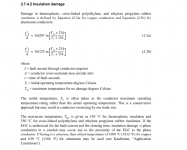Nothing in 250.122 says how to come up with that minumum
Correct, so let's do it via an exhaustive method:
Is #14 Cu compliant for my example? No, with NM cable, the 60C ampacity is 15A, and 15A < MCA = 28A.
Is #12 Cu compliant for my example? No, with NM cable, the 60C ampacity is 20A, and 20A < MCA = 28A.
Is #10 Cu compliant for my example? Yes, with NM cable, the 60C ampacity is 30A, and 30A >= MCA = 28A.
Is #8 Cu compliant for my example? Yes, with NM cable, the 60C ampacity is 40A, and 40A >= MCA = 28A.
So which one is the minimum? #10 Cu. There is no other reasonable answer.
I pass inspections like that all the time
Under the 2017 NEC, #8 NM cable with #10 EGC should fail for a branch circuit supplying HVAC equipment with an MCA of 28A and an MOCP of 40A and a 40A OCPD. Sorry if you've been doing it wrong. Although admittedly, that's a stupid rule other than the case of upsizing due to excessive branch circuit length.
Under the 2020 NEC, if you didn't pick #8 NM due to excessive branch circuit length, you get to say under the exception "well, I upsized from #10, but I didn't have to, the #10 NM would have worked fine, therefore a #10 EGC is an effective ground fault current path."
Cheers, Wayne
P.S. I guess you'd agree it should fail if a 30A OPCD is used?

